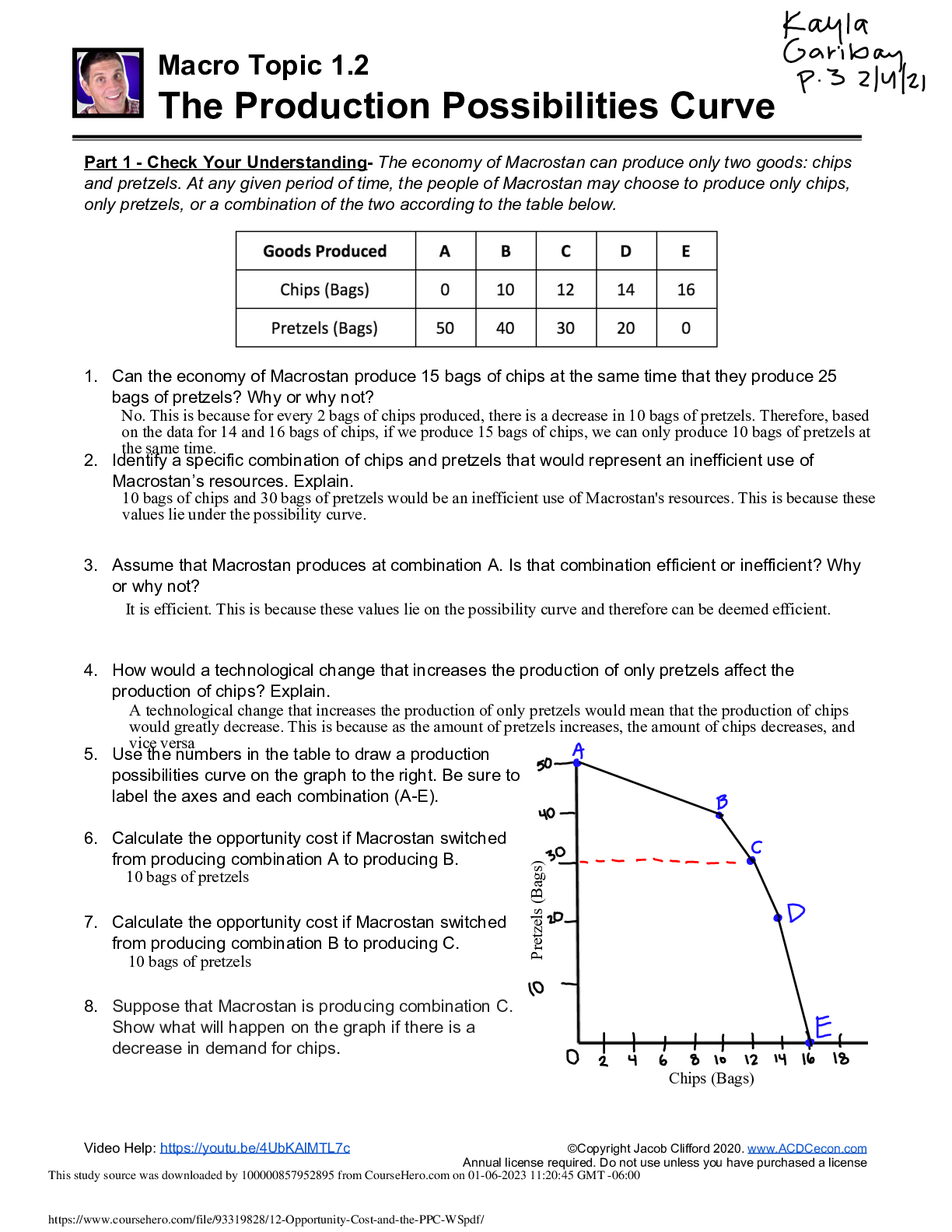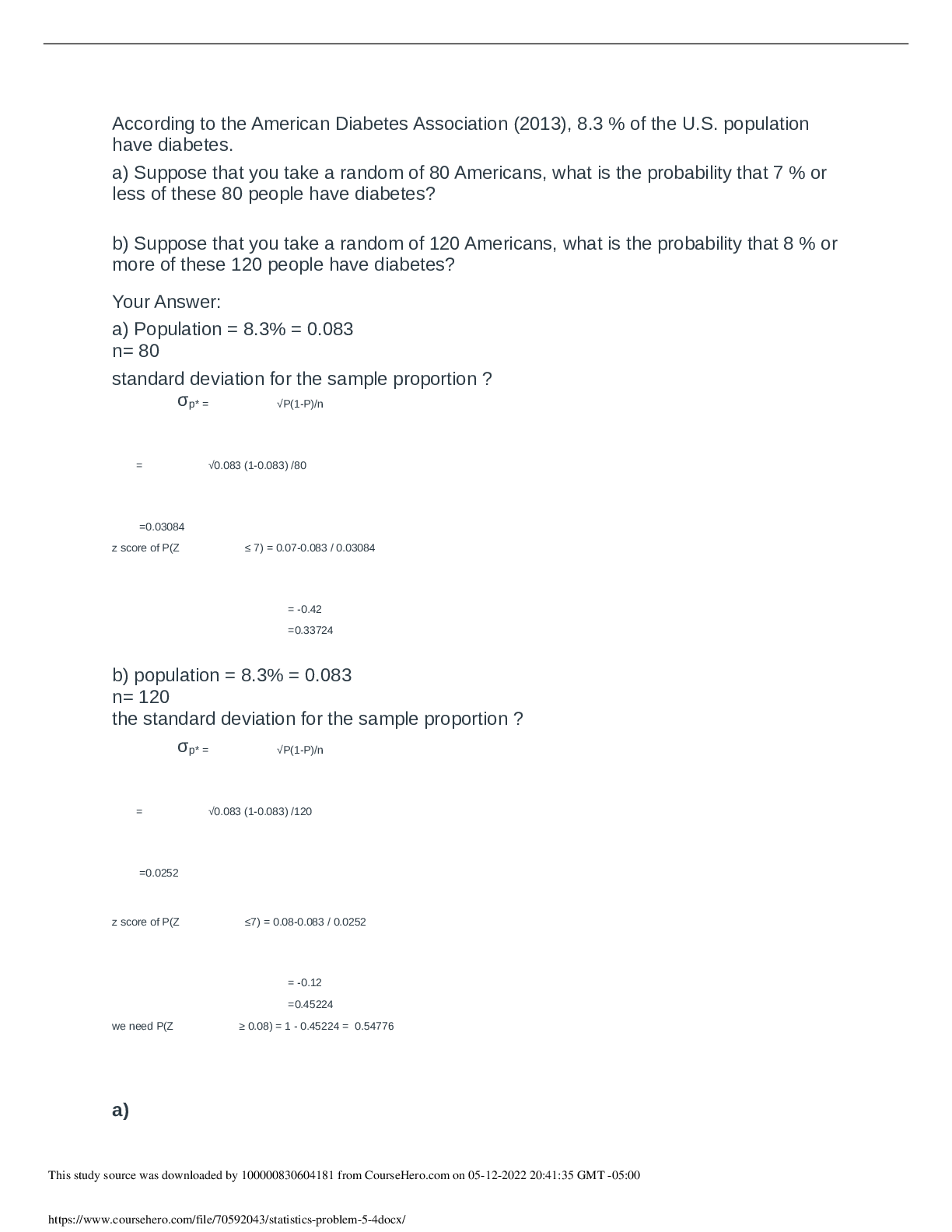Systems Analysis and Design > QUESTIONS & ANSWERS > G2_IST321_Group2_Assignment 5 - Cleveland State University IST 321 (All)
G2_IST321_Group2_Assignment 5 - Cleveland State University IST 321
Document Content and Description Below
1. Why is business process modeling important? Business process models describe the different activities that when combined together support a business process. Business processes typically cut acro... ss functional departments (e.g., the creation of a new product will involve many different activities that will combine the efforts of many employees in many departments). Furthermore, from an object-oriented perspective, they cut across multiple objects. Business processes is a very constructive activity that can be used to make sense out of the gathered requirements. They are very powerful tools for communicating the analyst's current understanding of the requirements with the user. 3. Why do we strive to have about three to nine major use cases in a business process? This is about the number of discrete items most people can comfortably deal with at one time. Having fewer major use cases may mean that we are collecting too many activities together into each use case. Having more major use cases may mean that we are describing more than one business process and that we need to distinguish more carefully among business processes before dividing up into sets of use cases. 4. How do you create use case diagrams? The first step in creating use case diagrams is to identify major use-cases and draw them on the diagram. Special use-case associations if any are identified and added to the diagram. The second step is to place the actors on the diagram. For better understandability, the actors are placed near the use-cases to which they are associated. Then, the subject boundary is drawn to separate use-cases from actors. The final step is to add associations by drawing lines to connect actors to the use-cases they interact with. 5. How is use case diagramming related to functional modeling? The purpose of use-case models is to provide a description of the problem domain. The use case descriptions and diagrams provide a formal definition of the external behavior or functionality of the business processes. These provide a logical view of the system. In the design phase a physical view of the internals of the new system are modeled. The functional modeling describes the functionality of a system from the user’s point of view. Since, use-case diagramming explains the functionality from the user’s point of view, it is related to the functional modeling. 6. Explain the f [Show More]
Last updated: 2 years ago
Preview 1 out of 2 pages
.png)
Buy this document to get the full access instantly
Instant Download Access after purchase
Buy NowInstant download
We Accept:

Reviews( 0 )
$4.00
Can't find what you want? Try our AI powered Search
Document information
Connected school, study & course
About the document
Uploaded On
Dec 12, 2022
Number of pages
2
Written in
Additional information
This document has been written for:
Uploaded
Dec 12, 2022
Downloads
0
Views
77






.png)




.png)


